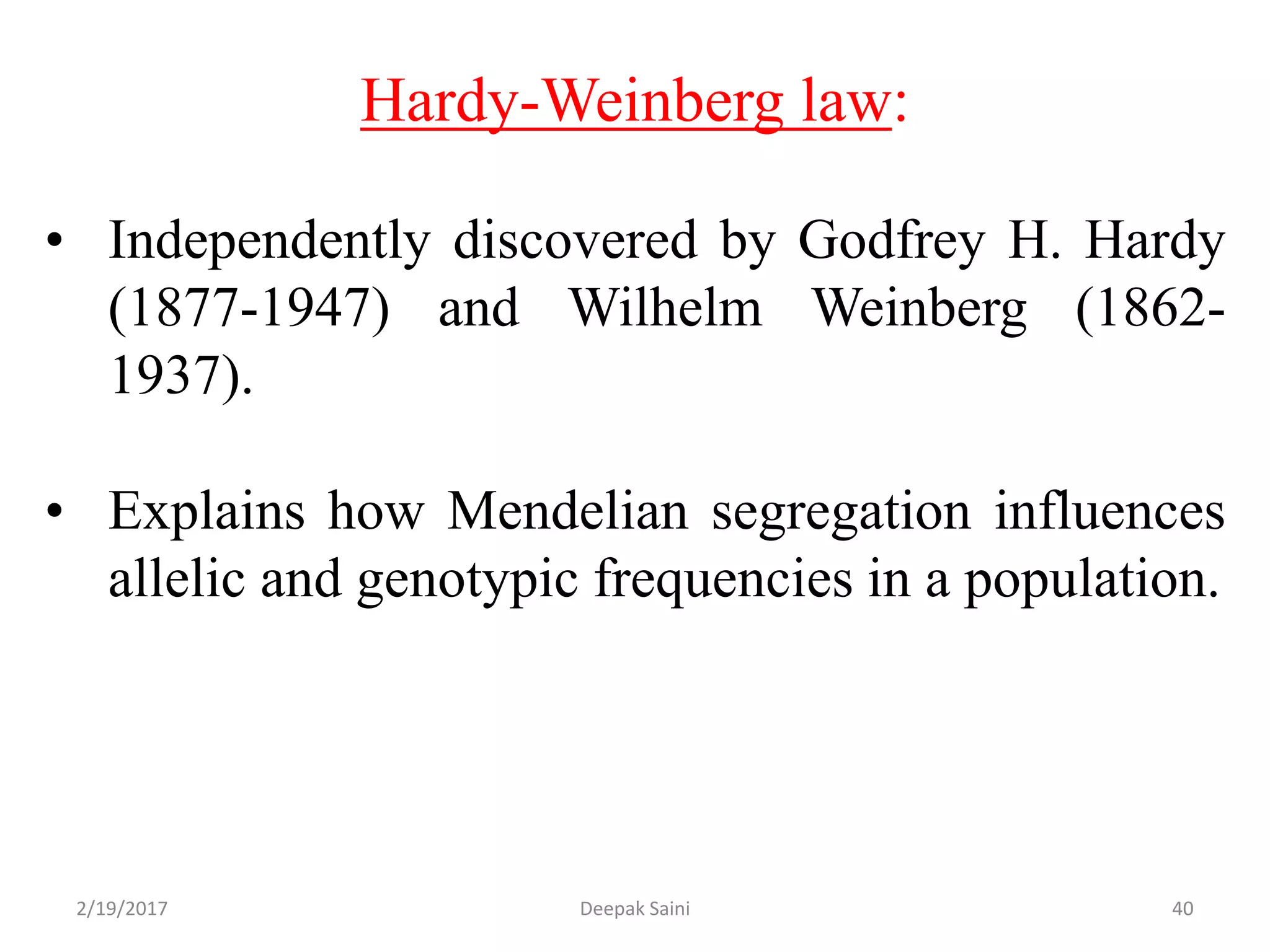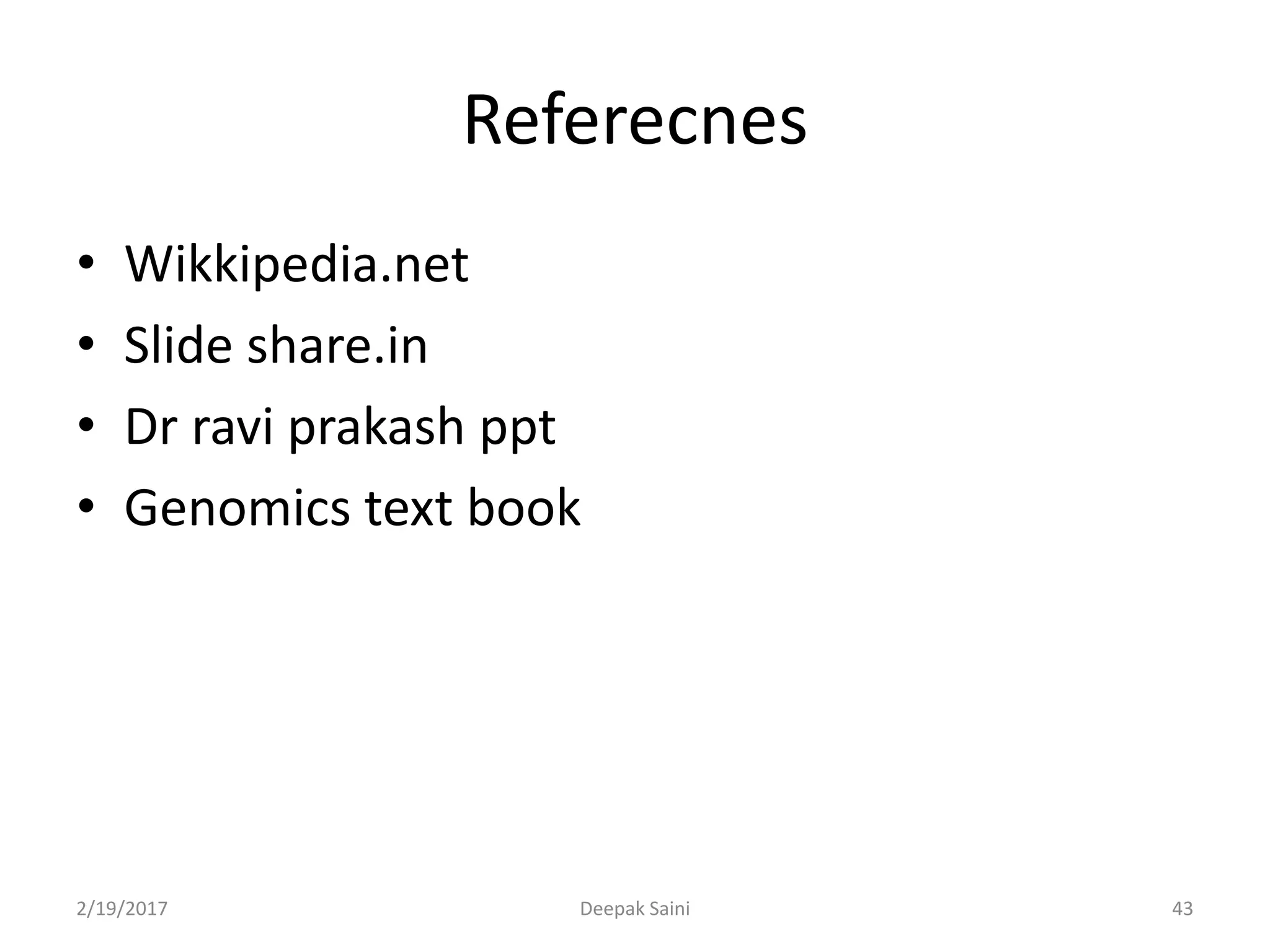This document provides information about human genetics and population genetics. It defines key genetic terms like chromosome, gene, allele, genotype and phenotype. It describes how genes are inherited from parents to offspring through sexual reproduction. The document also discusses sex determination and sex chromosomes. Population genetics is introduced as studying genetic variation within groups. The forces that act on allele frequencies like mutation, genetic drift, and migration are outlined. The foundations of modern evolutionary synthesis combining Mendelian genetics and natural selection are reviewed. Methods for describing genetic structure like genotypic and allelic frequencies are presented.



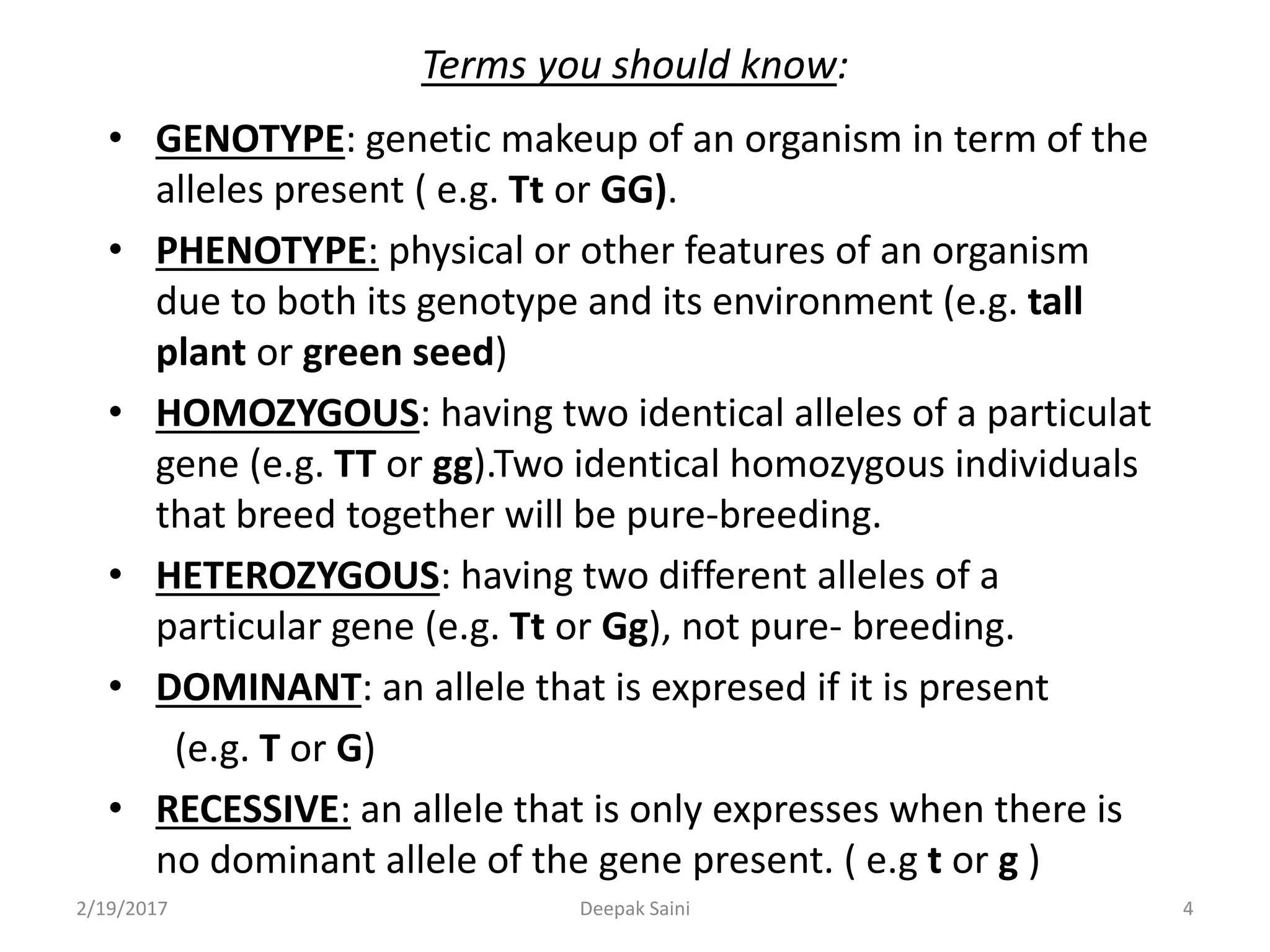









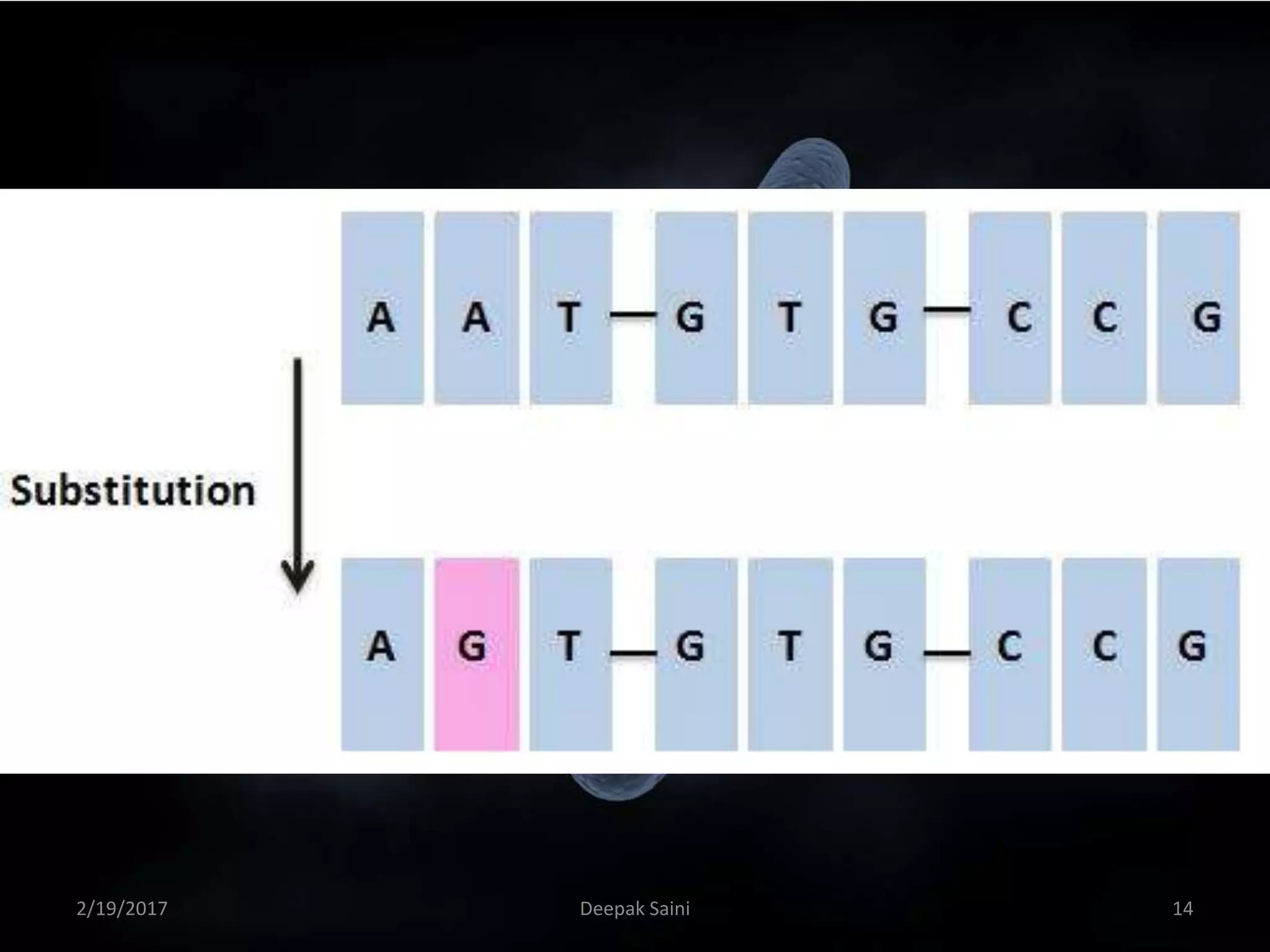



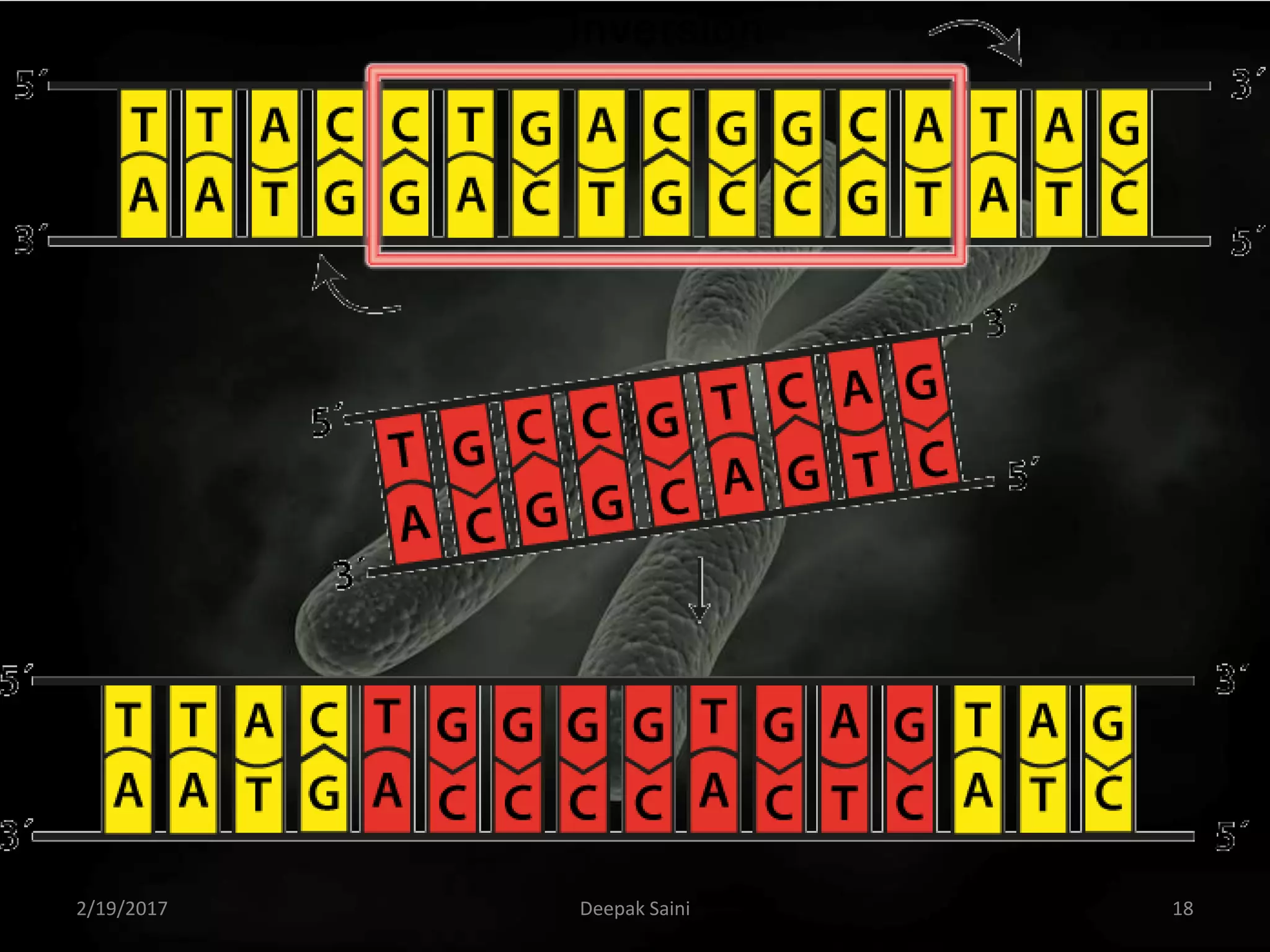



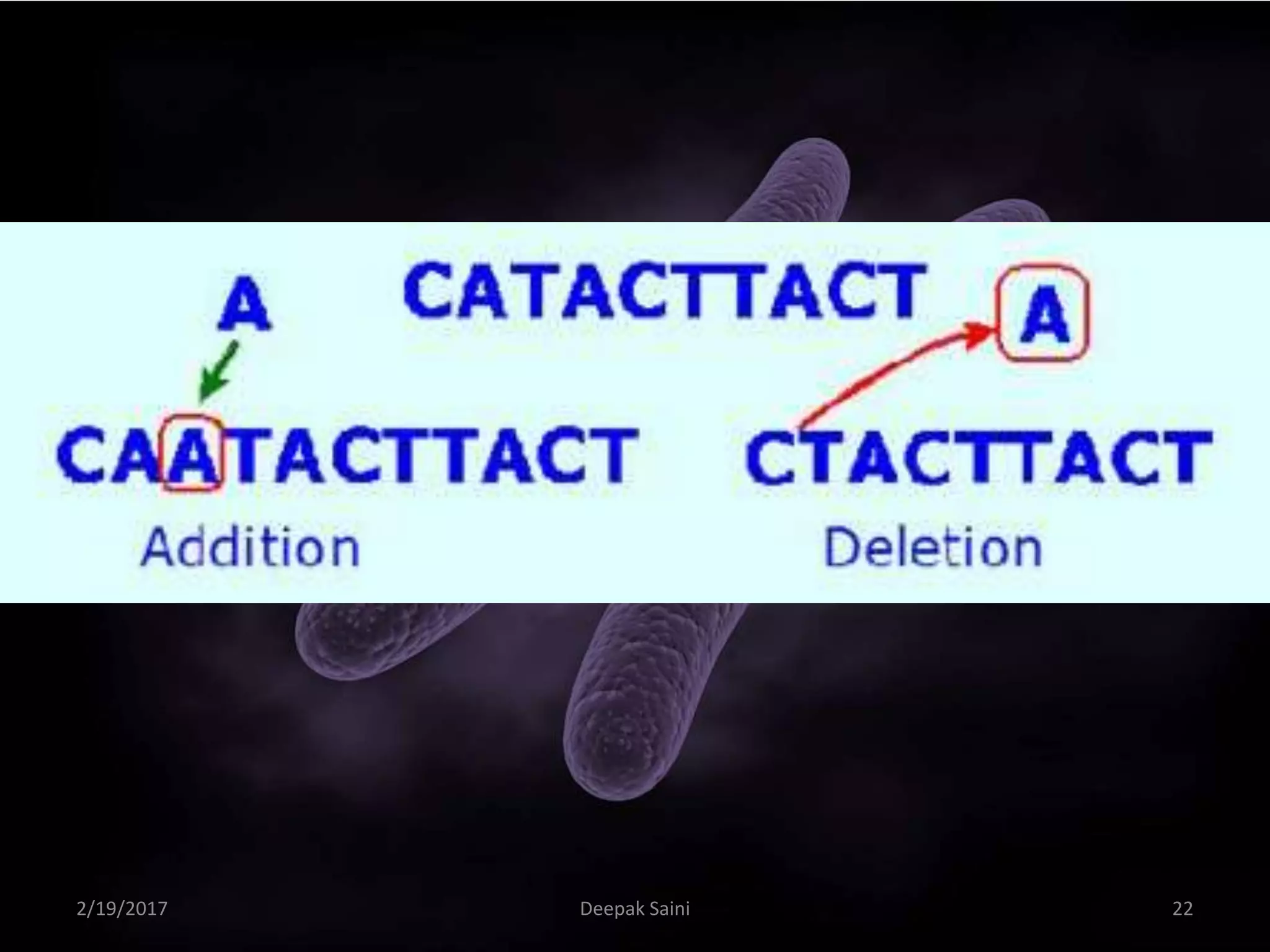


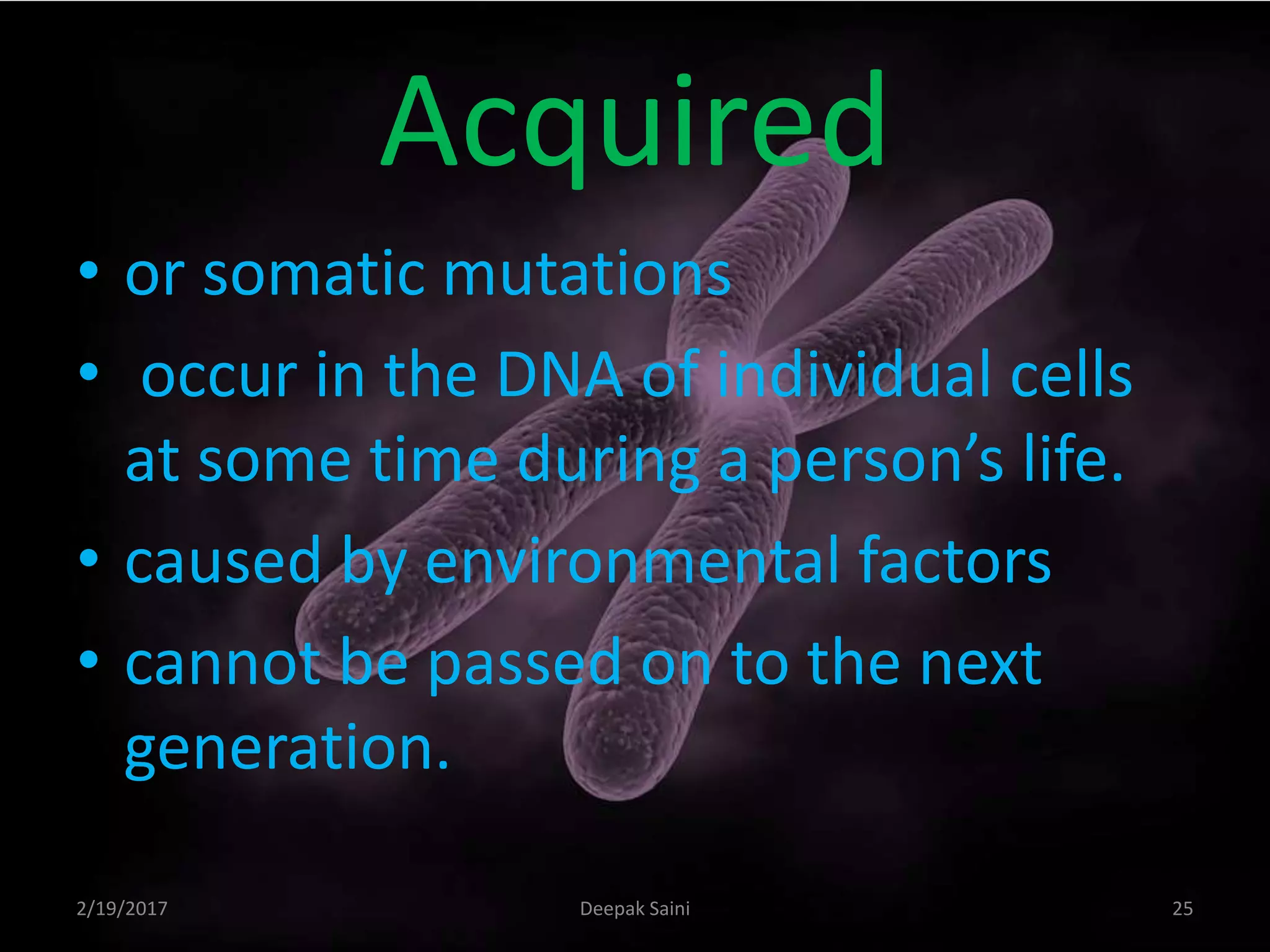
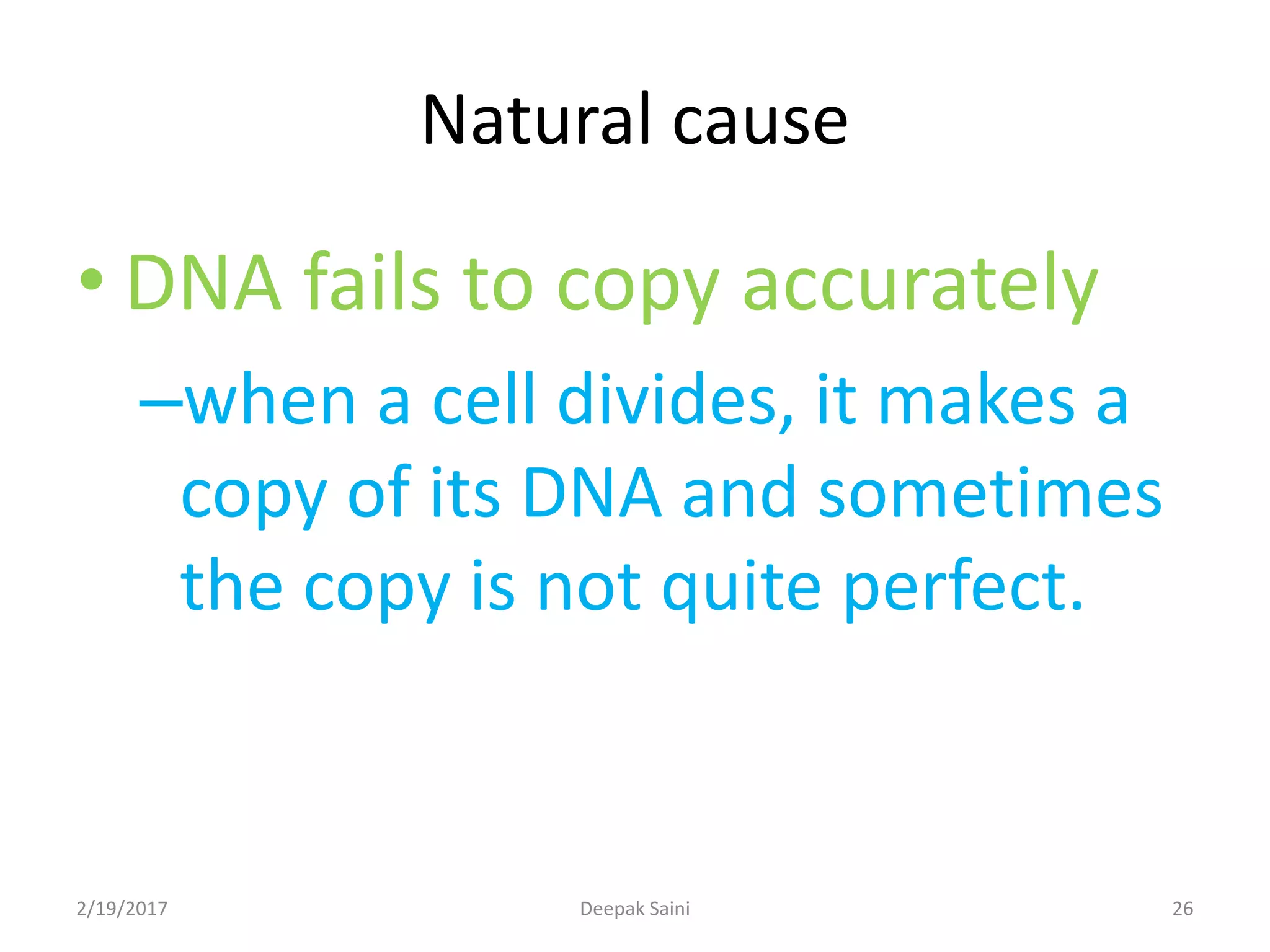

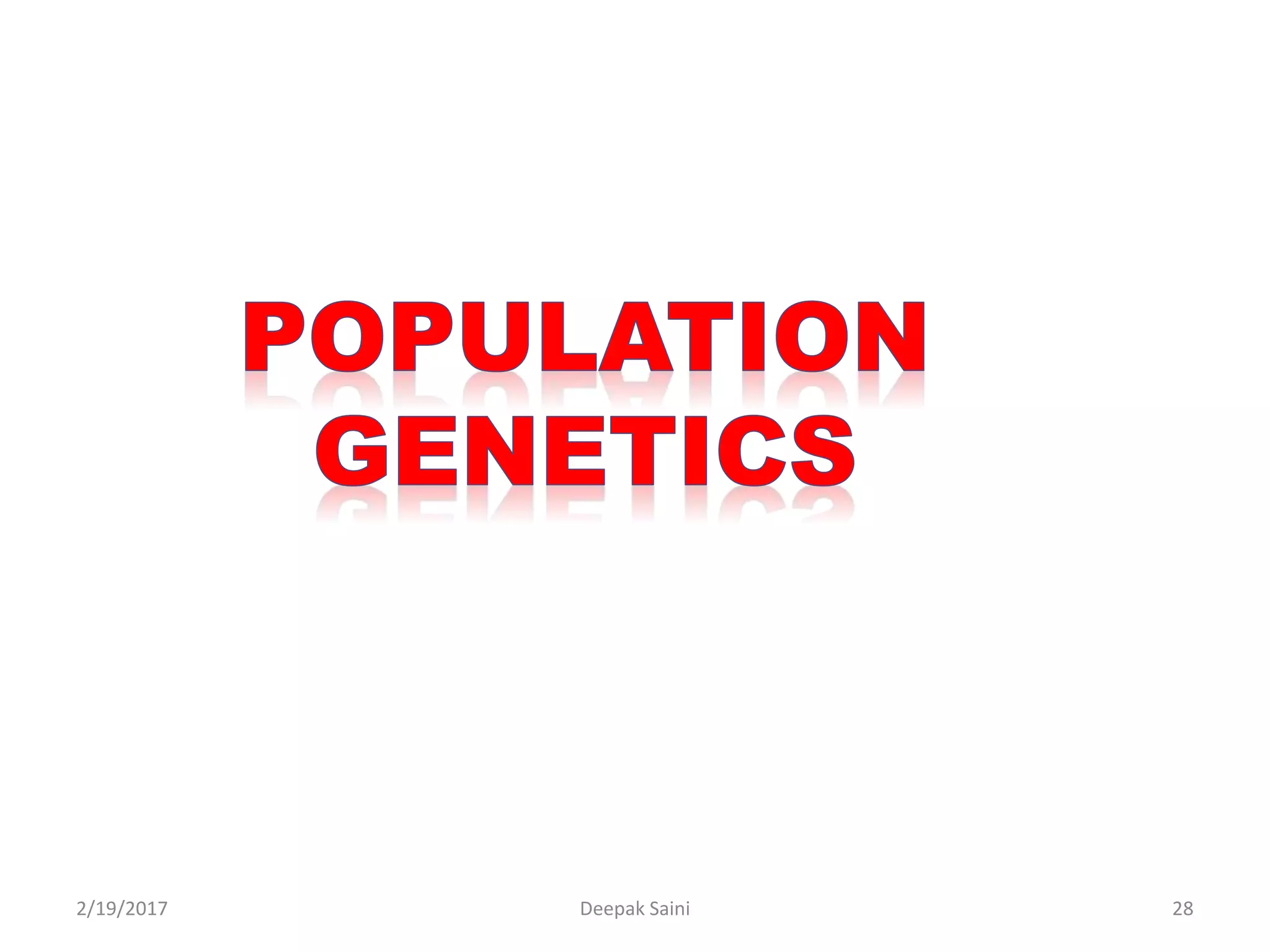


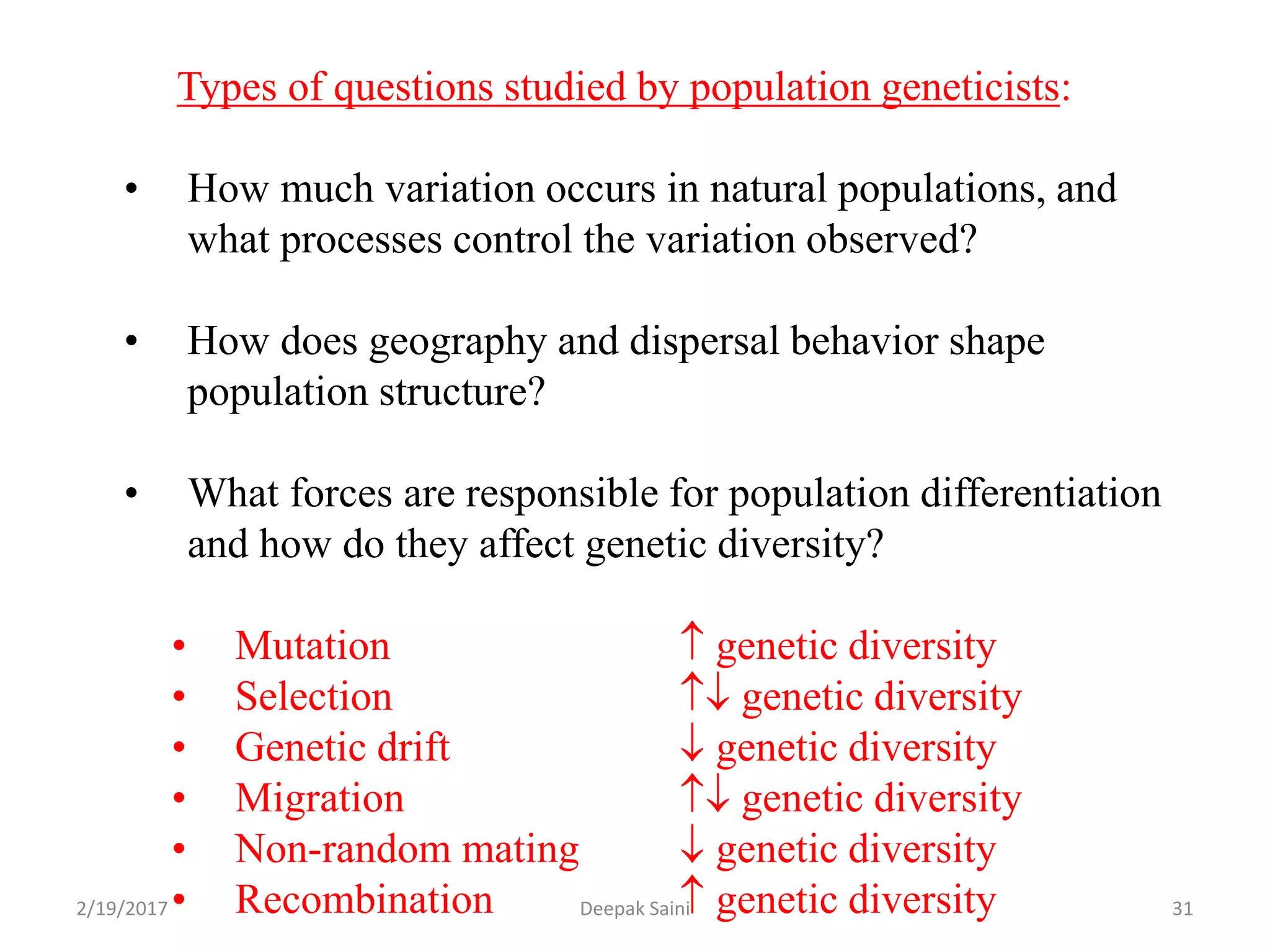





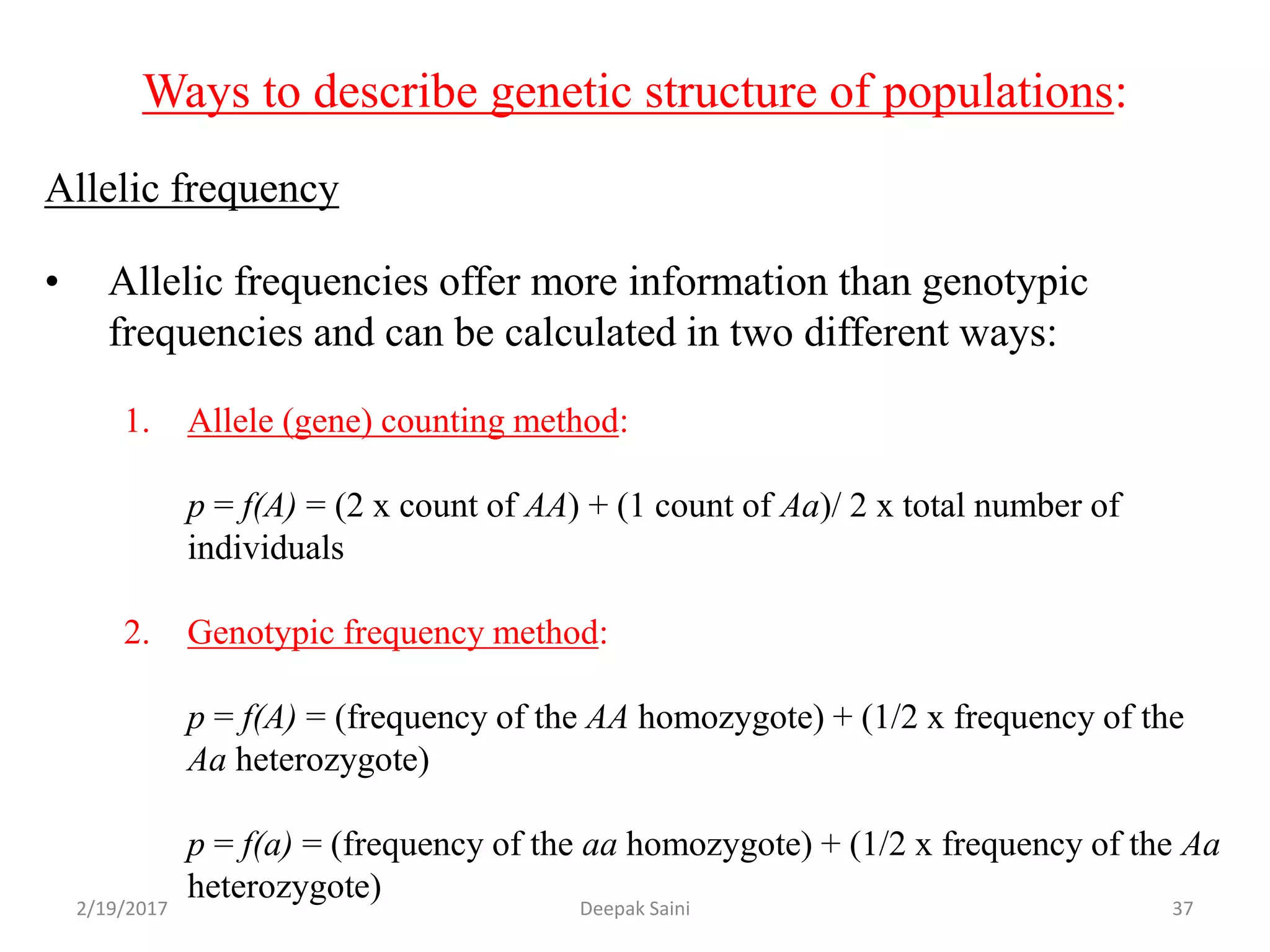

![Allelic frequencies at X-linked loci:
Females have 2 X-linked alleles, and males have 1 X-linked allele.
p = f(XA) = (2 x XA XA females) + (XA Xa females) + (XA Y males)/
(2 x # females) + (# males)
q = f(Xa) = (2 x Xa Xa females) + (XA Xa females) + (Xa Y males)/
(2 x # females) + (# males)
If number of females and males are equal:
p = f(XA) = 2/3[f(XAXA) +1/2f(XAXa)] + 1/3f(XAY)
q = f(Xa) = 2/3[f(XaXa) +1/2f(XAXa)] + 1/3f(XaY)
2/19/2017 39Deepak Saini](https://image.slidesharecdn.com/presentation11-170307183523/75/human-genetics-and-population-genetics-39-2048.jpg)
